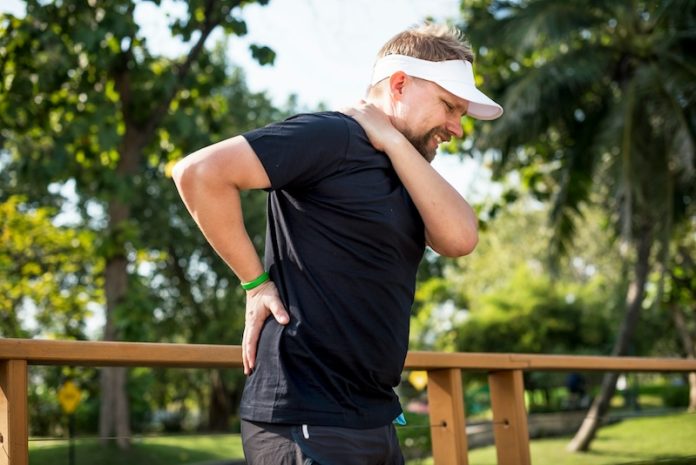
Everyone has experienced pain at some point, whether from a scraped knee, a sore tooth, or a minor injury. In most cases, the pain fades away as the body heals. But for some people, the pain doesn’t go away. It lasts for weeks, months, or even years. This kind of long-term pain is called chronic pain, and it can make daily life very difficult.
Doctors often use different methods to help people manage chronic pain. One common approach is prescribing opioid painkillers. These medicines can be very effective, but they also come with serious risks. If not used carefully, they can lead to addiction or other health problems.
Because of these risks, two major health organizations in the U.S.—the Department of Veterans Affairs (VA) and the Department of Defense (DoD)—have introduced new guidelines to ensure opioids are used as safely as possible. The guidelines were written by Dr. Friedhelm Sandbrink and his team and were recently published in the medical journal Annals of Internal Medicine.
What Do the New Guidelines Say?
The new guidelines contain 20 important recommendations for doctors who prescribe opioid painkillers. Here are some of the key points:
- Opioids should not be the first choice for treating chronic pain that is not related to cancer. Instead, doctors should try other treatments first, such as physical therapy, exercise, and non-opioid pain relievers.
- These medicines should only be used for short periods. Long-term use should be avoided whenever possible, especially for young people or those with a history of drug misuse.
- Doctors should not prescribe opioids together with benzodiazepines. Benzodiazepines are medications often used for anxiety or sleep problems, but mixing them with opioids can be dangerous.
- If opioids must be used, the smallest possible dose should be given for the shortest time needed.
- Patients should have regular follow-ups with their doctor. A check-up should happen within 30 days of starting the medication, and more visits should follow if the patient continues using the medicine.
- Buprenorphine might be a safer alternative for some patients. This medication works differently from other opioids and has a lower risk of addiction and overdose.
Why Are These Rules Important?
Opioids can relieve pain, but they can also be harmful. Some people develop a dependence on them, meaning they feel like they need the drug even when they no longer have pain. Others might accidentally take too much, which can be dangerous or even life-threatening.
The new guidelines help reduce the risks while still allowing people to get pain relief when needed. Dr. Sandbrink and his team believe that, for most people, the dangers of opioids outweigh the benefits. That’s why it’s so important to be careful with their use.
These guidelines are designed to help doctors make better decisions and to keep patients safer. They also encourage patients to ask questions and be aware of the risks before starting opioid treatment.
A Safer Approach to Pain Management
Pain is a serious issue, and everyone deserves safe and effective treatment. While opioids can be helpful in certain cases, they should not be the first option for managing chronic pain. These new guidelines encourage a more balanced approach, focusing on treatments that are safer in the long run.
If you or someone you know is dealing with chronic pain, it’s important to talk to a doctor about all available options. There are many ways to manage pain without relying on strong medications that could cause harm.
By following these new rules, both doctors and patients can work together to find the best and safest path to pain relief.
If you care about pain, please read studies about vitamin K deficiency linked to hip fractures in old people, and these vitamins could help reduce bone fracture risk.
For more information about wellness, please see recent studies that Krill oil could improve muscle health in older people, and eating yogurt linked to lower frailty in older people.
Copyright © 2025 Knowridge Science Report. All rights reserved.



